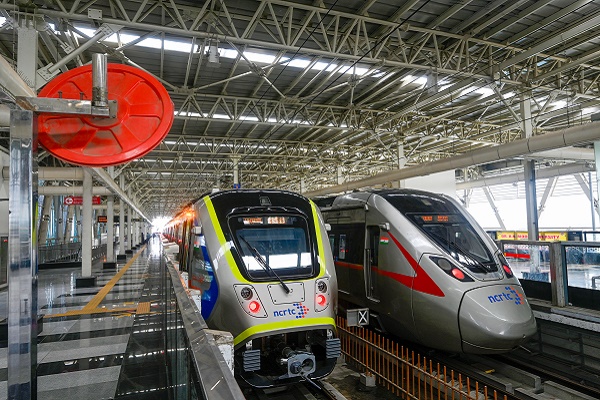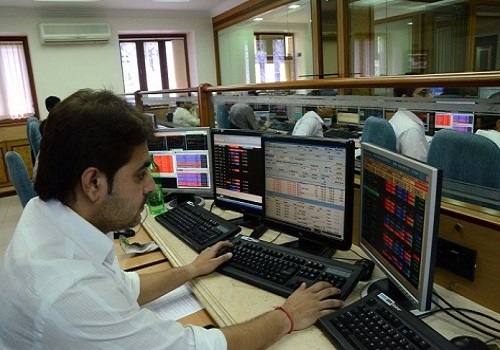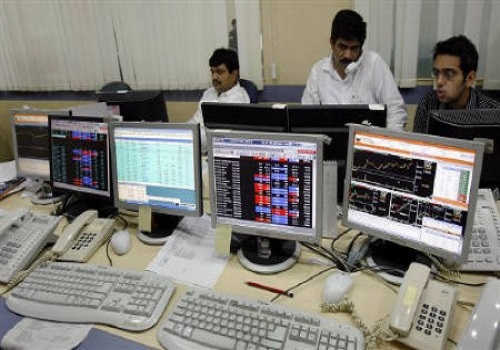Weekly View on Fixed Income markets by Puneet Pal, Head-Fixed Income, PGIM India Mutual Fund

Below The Weekly View on Fixed Income markets by Puneet Pal, Head-Fixed Income, PGIM India Mutual Fund
Corporate Bond Curve of 3-6 yrs maturity presents a decent investment opportunity in the current circumstances
Our View
The current stance of RBI is to support growth and the focus is on effective transmission of the policy rate cuts into lending rates. This means that RBI will keep the banking liquidity easy. Coupled with this, easy liquidity stance and expectations of another rate cut with average FY26 CPI inflation likely to be 50bps below RBI’s projection, we believe that the Corporate Bond Curve of 3-6 yrs maturity presents a decent investment opportunity in the current circumstances. The current spread of 60-70 bps between the AAA 5yr maturity PSU bond yields with the corresponding maturity G-sec is attractive from a historical spread perspective whenever the banking system liquidity is in surplus. Along with this the longer end of the curve (30yr) presents a tactical opportunity as yields at the longer end are unchanged over the last one year and from the beginning of the CY25 which can spur value buying.
Investors can continue to allocate to Short Term/Corporate Bond Funds having portfolio maturity up to 6yrs while being tactical in their allocation to duration through Dynamic Bond Funds. Investors should have an investment horizon of 12-18 months while investing. Money market yields of up to 1yr are also looking attractive from a relative risk-reward scenario and investors can look to allocate in that segment also. We expect the 10yr bond yield to trade in a range of 6.10% to 6.50% over the course of the next one month.
The latest CPI print reinforces the benign trajectory driven by moderating food prices as well as benign commodity prices. CPI inflation for FY26 is likely to average below RBI’s forecast of 3.70%, coming in around 3%. This increases the probability of incremental rate cuts and we expect one more policy rate cut of 25bps by Dec 2025. WPI inflation slowed further to -0.13%, the lowest print since Oct 2023. This was driven largely by food prices (both in vegetables and cereals, pulses). The goods trade deficit narrowed (for June 2025) to USD18.80bn (May: US$21.9 bn), led by sharp fall in oil and gold imports. The services trade surplus remained steady at US$15.3 bn. Exports in June decreased 0.1% YoY to US$35.1 bn (May: US$38.7 bn). The trend of increasing exports to the US continued with an increase of 24% in June and 22% in 1QFY26, even as overall export growth was flat, signaling front-loading of exports to the US over other destination countries. Imports in June decreased 3.7% YoY to US$53.9 bn. Both oil and non-oil imports fell sharply. Gold imports have declined 26% YoY in June and 10% YoY in 1QFY26. The external account is expected to remain stable with analysist expecting the Current account deficit around 1% of GDP.
Monsoon continued to be strong with cumulative rainfall 12% above the long-term average till July 11. On a cumulative basis, rainfall was above-normal in north, west and central India while below-normal in east and south India. Out of the 36 sub-divisions, 8 have received deficient rainfall, 12 have received normal rainfall, and 16 have received excess rainfall. As of July 4, the total kharif acreage was 11.1% higher than the same period last year. Rice sowing was 7.4% higher at 6.9 mn hectares. Pulses acreage at 4.3 mn hectares was 35% higher than last year while coarse cereal acreage was 21% higher at 7.7 mn hectares. Oilseeds acreage was 14% higher at 10.8 mn hectares. Sugarcane acreage was 0.5% higher at 5.5 mn hectares, while jute acreage was 2.7% lower at 0.5 mn hectares and cotton acreage was 1.2% higher at 8 mn hectares. Basin-wise reservoir levels has remained in surplus. Among major river basins, Cauvery (South), Ganga (North and East), Godavari (West and South), Krishna (West and South), Narmada (Central and West), Tapi (Central and West), Mahanadi (Central and East) and West flowing southern rivers were surplus. Indus (North India) was deficient. Overall, basins and reservoirs levels were 82% above long-term average for the week-ending July 10.
The OIS curve was relatively stable with the 1yr OIS yield at 5.50%, lower by 4bps since the start of the month while the 5yr OIS yield was at 5.70% bps lower by 1bps since the start of the month. INR weakened to 86.16 from 85.75 from the start of the month. Brent crude rose to 69.28 from 67.61 at the start of the month. FPI inflows into debt turned positive for the month with over USD 1bn of inflows. The money market curve remained stable though the market remains a bit confused as RBI announced VRRR’s to bring the overnight lending rates closer to the policy repo rate. In conducting VRRR’s, RBI seems to be sending the signal to market participants that RBI wants the overnight lending rates to be within the policy corridor ( 5.25% -5.75%), which was made clear to some extent by the RBI Governor in a media interaction.
International Markets:
Globally, bond yields continued to be elevated as debt concerns dominated the narrative along with the continued strength of the US economy. The US benchmark 10yr bond yield ended the week at 4.42% , 19 bps higher than at the start of the month levels of 4.23%. Long end Japanese bond yields also rose with the 30yr bond yield touching a high of 3.15%. Chinese CPI turned positive after 5 months, rising 0.1% (YOY).
Above views are of the author and not of the website kindly read disclaimer










Tag News

F & O Rollover Report 26th December 2025 by Axis Securities













